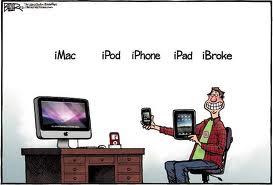Answering the Big Question on New Technology in Schools: Does It Work? (Part 1)
What drives many district and state technology leaders bonkers is being asked time and again by their school boards, superintendents, parents, and media: What does the research say about whether we should invest in iPads, tablets, and 1:1 laptops? What they really want to know is: does the new technology work? Is it effective?
Of course, some district technology leaders and superintendents already know the answer; they forge ahead to buy iPads for kindergartners in Auburn (ME) or hand out over 6,000 to every high school student and teacher in Lexington (SC). They do not need researchers to tell them that these devices “work.” They believe and know that they will work.
For those technology leaders, however, who want to provide credible answers to the inevitable question that decision-makers ask about the effectiveness of new devices, they might consider a prior question. What is the pressing or important problem to which an iPad is the solution? Asking that question first uncovers the confused set of purposes that surround buying and using high-tech devices in classrooms.
Drawn from reports of superintendents, school board members, and technology champions, here is a short list of those problems that will get solved by 1:1 laptops and other devices.
*These devices will motivate students to work harder, gain more knowledge and skills, and be engaged in schooling.Engaged students will achieve higher grades. When the Auburn (ME) school board authorized the purchase of iPads for kindergartners, their leaders assured them that reading scores would rise.
*Students will be prepared for an information-driven labor market. Or as one superintendent put it: “Students have to have digital competence, and to be competent, you have to have access. Using current-day technology should be a normal part of what we do. We need to close the gap between schools, education and the real world.”
*High-tech devices will erase the gap in access to knowledge that exists between poor and wealthy. The superintendent who bought 6,000 iPads said: “It’s an equalizer. There’s no difference in learning advantage from the poorest to the most affluent.”
*Using laptops and tablets will transform traditional teaching.
There are, then, many immediate problems that high-tech devices and software could solve. Now the question of whether these hardware and software solutions “work” can be asked. These varied problem s attribute great powers to these devices and software to solve problems of students disengagement, lack of job preparation, the gap between the worlds that children and youth experience inside and outside school, socioeconomic differences in access to knowledge and skills, traditional classroom lessons, and, finally, the problem of low academic achievement of U.S. students.
That is one big heap of purposes squeezed into the question of whether 1:1 tablets and laptops “work.” Especially since there is hardly any research evidence that these high-tech devices solve these complex problems.
This blog post has been shared by permission from the author.
Readers wishing to comment on the content are encouraged to do so via the link to the original post.
Find the original post here:
The views expressed by the blogger are not necessarily those of NEPC.

